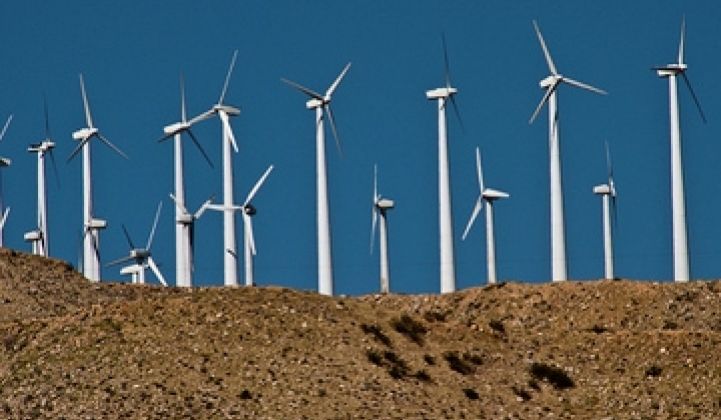California is likely to see 365 megawatts of new renewable energy capacity for 2009, but its utilities aren't likely to meet a state requirement to buy 20 percent of their electricity from renewable sources by 2010.
The Pacific Gas and Electric Co. expects to reach 14 percent by the end of this year, said Jonathan Marshall, a spokesman for the utility.
The 2008 mix was 11.9 percent for PG&E, 15.5 percent for Southern California Edison and 6.1 percent for San Diego Gas & Electric.
These three largest utilities in the state are expected to get renewable electricity from new power plants with 365 megawatts of generation capacity in 2009, according to California Public Utilities Commission's third-quarter report on the renewable portfolio standard.
The utilities have signed gigawatts of contracts with solar, wind and geothermal power plant developers in recent years to try to meet the 20 percent mandate. Because these are power delivery contracts, the utilities aren't involved in planning and financing the projects.
Earlier this week, PG&E said it plans to buy power from power plants totaling 500 megawatts in generation capacity from NextEra Energy Resources and Abengoa Solar. Power delivery is scheduled to start in 2013.
Meeting the mandate isn't so easy, and utilities face financial penalties if they don't comply. As utilities have come to realize, these power projects can be mired in the permitting processes or having trouble lining up adequate financing.
In 2007, the three utilities sold 22,393 gigawatt hours of renewable electricity, compared with 22,719 gigawatt hours in 2006, said the CPUC report. In 2008, the figure reached 23,394 gigawatt hours.
"It's a challenge, because some of the developers are facing financial pressures given the state of the financial market. There are permitting delays and transmission constraints," Marshall said.
The PG&E announced Friday that it plans to buy more geothermal power from Geysers Power Co., a subsidiary of Calpine Corp.
The deal, which requires approval from the California Public Utilities Commission, would expand two existing contracts, which total 375 megawatts per year, to 425 megawatts from 2010 through 2017. It will then shrink to 250 megawatts from 2018 through 2021.
Marshall noted the reliability of geothermal power compared with other renewable sources of energy such as solar and wind. Geothermal fields can produce electricity around the clock. Solar only works during the day. Wind farms tend to be more productive at night, when demand is the lowest, but wind power is generally cheaper than solar.
Geothermal power also makes up the biggest source of renewable energy supply for Southern California Edison, said Mike Marelli, director of contract origination and analysis at the utility. It accounts for 62 percent of the clean energy mix, followed by wind at 21 percent, he said.
Geothermal makes up the biggest share of the overall, existing renewable energy sales in the state, the CPUC said. Wind energy is growing the fastest, however. From 2003 to 2008, 90 percent of the new capacity came from wind, with nearly half of them coming from out of state.
Edison has signed up to 30 billion kilowatt hours of renewable power since 2002 (or about 9.4 gigawatts in terms of generation capacity), and bulk of these are under development, Marelli said.
"We are in the marketplace constantly to look for the best projects and opportunities for purchasing renewable energy," Marelli said.
Edison is developing its own, 250-megawatt solar project. PG&E also has its own, same-size project.
The utilities actually don't have to get to that 20 percent mix next year. The state policy essentially allows a three-year grace period. By next year, the utilities have to show that they have signed enough contracts for delivery through 2013 that would enable them to meet the 20 percent requirement. Of course, these contracts have to materialize to avoid any penalties.
Photo via Flickr/Creative Commons.



